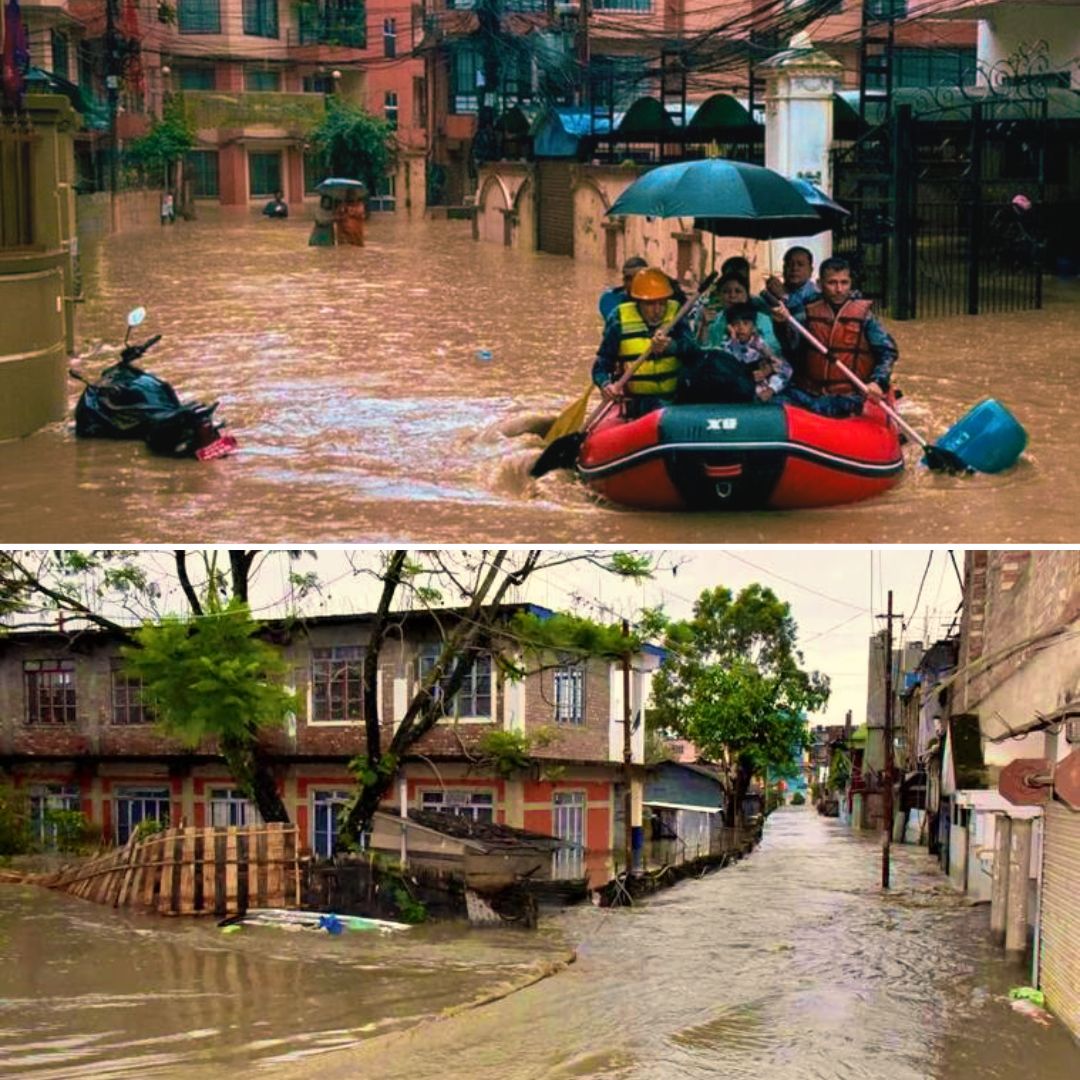At least 32 people have allegedly lost their lives across Assam, Arunachal Pradesh, Meghalaya, Mizoram, and Nagaland after relentless monsoon rains allegedly triggered widespread floods and landslides since late last week.
Thousands have allegedly been displaced, with major cities like Guwahati experiencing severe waterlogging, power outages, and school closures. Rescue and relief operations by the Indian Army, National Disaster Response Force (NDRF), and local authorities are ongoing, as officials warn of continued heavy rainfall and urge mass evacuation from high-risk areas.
Both state and central governments have announced compensation for the affected families and are intensifying emergency response efforts.
Devastation Across the Northeast: Human Stories and Official Response
The early and intense arrival of the monsoon has allegedly left a trail of destruction in the northeast. In Assam, at least nine alleged deaths have been reported, including three family members who were allegedly killed in a mudslide in Guwahati’s Kahilipara area. Arunachal Pradesh has seen nine fatalities, allegedly due to landslides and flash floods that swept away homes in districts like Papum Pare and West Siang.
Mizoram reported five alleged deaths after a landslide buried several houses in Aizawl, while Meghalaya and Nagaland have allegedly reported six and two deaths respectively. Over 78,000 people in Assam alone have allegedly been affected, with 1,200 people allegedly taking shelter in relief camps and 17 districts allegedly hit hard by the disaster. Assam’s Chief Minister, Himanta Biswa Sarma, has ordered power cuts in the worst-affected regions to prevent electrocution and urged residents to move to safer locations.
Arunachal Pradesh Chief Minister Pema Khandu announced an ex-gratia payment of ₹4 lakh to the families of the deceased and assured that all possible assistance would be provided. The Indian Army’s “Operation Jal Raha” has allegedly rescued hundreds in Manipur, where over 3,200 localities are allegedly flooded and nearly 900 homes allegedly damaged. Emergency teams continue to evacuate residents, distribute food, water, and medical aid, and clear debris from roads to restore connectivity.
Background: Weather Patterns and Ongoing Risks
The current crisis was allegedly triggered by a depression that formed over Bangladesh and Meghalaya, causing intense and prolonged rainfall across the region. This weather system has allegedly caused major rivers such as the Brahmaputra and Barak to swell above danger levels, breaching embankments and allegedly inundating large tracts of farmland, towns, and villages.
The India Meteorological Department (IMD) has issued red and orange alerts for Assam and neighbouring states, warning that heavy rainfall is likely to persist for several days and that the risk of further landslides and flash floods remains high. Urban centres, especially Guwahati, are facing additional challenges due to inadequate drainage systems and unplanned settlements on allegedly vulnerable slopes, which have worsened the impact of the deluge.
Transport links, including flights and highways, have allegedly been severely disrupted, with landslides blocking key roads and rail lines. Over 1,500 tourists are allegedly stranded in Sikkim after landslides cut off access to popular destinations such as Gangtok and Lachung. Experts and officials are calling for urgent improvements to early warning systems, disaster preparedness, and the construction of resilient infrastructure to better withstand future extreme weather events.
#WATCH : Floods and rains cause heavy destruction in Northeast's Manipur and Sikkim, about 30 people dead.. Army comes for rescue
— Ravi Pandey🇮🇳 (@ravipandey2643) June 1, 2025
More than 3800 people have been affected in Manipur.
PLS PRAY 🙏 FOR MANIPUR & SIKKIM#manipurflood #Imphal #Rain #ImphalRain #Rescue #NDRF #SDRF pic.twitter.com/G7CUMEpxFx
The Logical Indian’s Perspective
The widespread devastation allegedly unfolding across India’s northeast is a stark reminder of the urgent need for climate-resilient infrastructure, effective disaster management, and above all, compassion for those most affected. The stories emerging from the region—of families allegedly losing loved ones, homes, and livelihoods—underscore the importance of timely government action, community solidarity, and transparent governance. As rescue and relief operations continue, it is vital that we learn from these tragedies and work collectively to build safer, more inclusive communities.
The Logical Indian stands in solidarity with the affected people and urges all stakeholders to prioritise empathy, preparedness, and sustainable development. How can we, as a society, better support vulnerable regions during such climate emergencies and ensure that no one is left behind?
Today: Villagers forced to cross overflowing in Maliney, Arunachal Pradesh, India
— Weather Monitor (@WeatherMonitors) June 1, 2025
Northeast India floods:32 dead in 24 hours.Monsoon havoc
-Arunachal Pradesh:9 dead
-Assam:11 dead; 175 villages flooded, 78,000+affected.
-Meghalaya:7 dead.
-Mizoram:6 dead.
-Nagaland:1 death. pic.twitter.com/p4G85sJQpc











